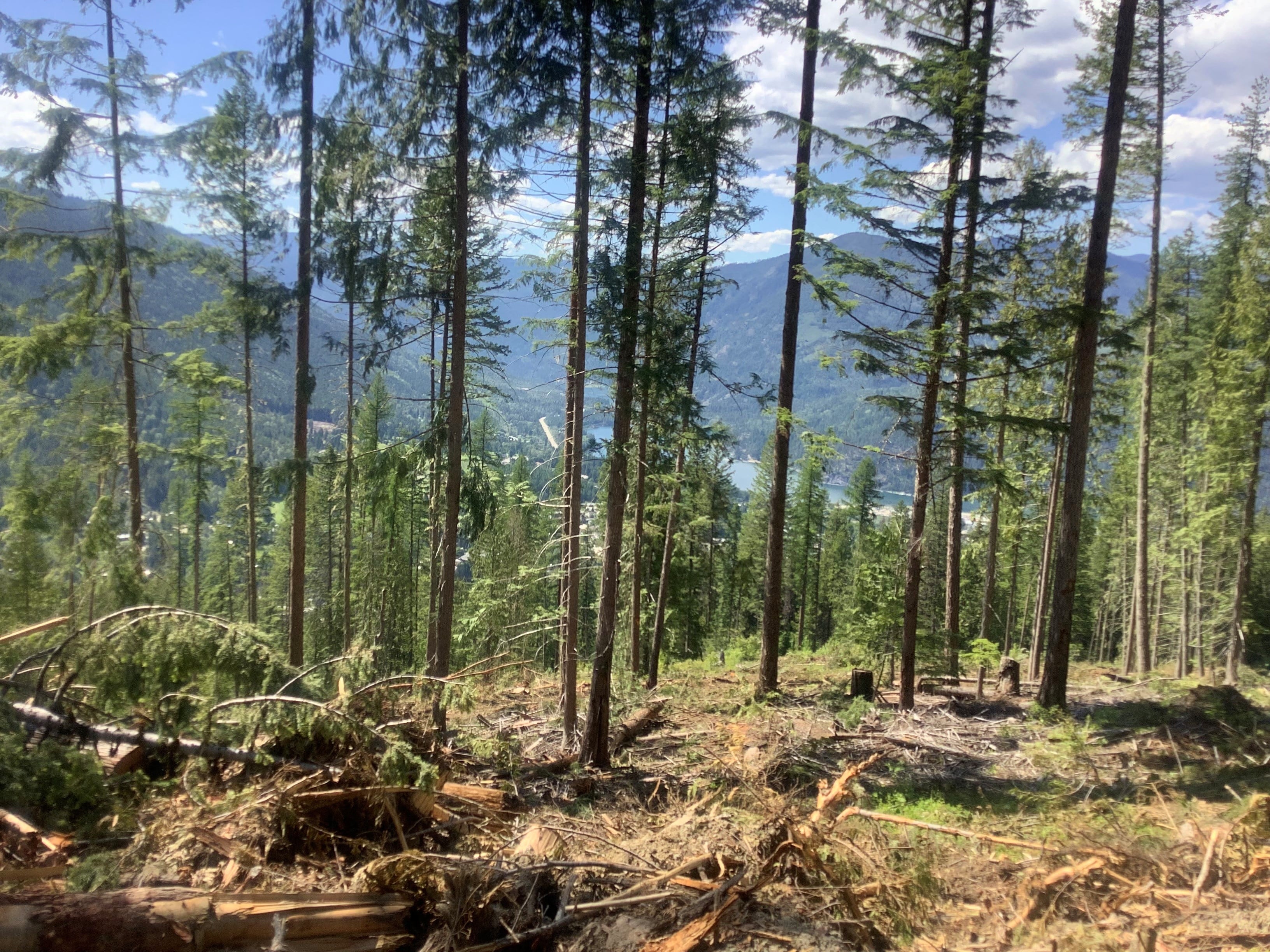City to see Selous Creek watershed area undergo fuel mitigation logging
A new fuel management project for wildfire mitigation starting west of the city should put a little more certainty and ease into an uncertain time for Nelsonites.
A collaboration between the Regional District of Central Kootenay (RDCK) and Kalesnikoff Lumber Co. Ltd., the Selous Creek fuel management project begins this month and is designed to reduce the risk of wildfire adjacent to Nelson and the threat to its secondary source of water, the Selous Creek water intake.
In reducing wildfire risk, the project will retain large and healthy fire-resistant trees but remove surface fuels and understory trees. This is expected to enhance “infrastructure protection for potential future suppression efforts.”
Normally the visual quality objective (VQO) of retention prohibits any large-scale harvest in a place like the Selous Community Watershed, which is part of Nelson’s watershed along with Anderson and Five Mile Creek.
Drinking water is supplied to the city’s residents from three community watersheds, including Selous, Five Mile and Anderson creeks. Each one of the watersheds is physically separate but also share similar challenges and risks.
Once mechanical harvesting begins in mid-March — above the rail trail south of Mountain Station, from the cemetery south to the first trestle — trail users will be detoured around the high hazard area by traffic controllers. However, the rail trail will be fully accessible during weekends. Activities should continue for eight weeks until mid-May.
The project — supported through funding from the Forest Enhancement Society of BC — covers an area of approximately 65 hectares directly upslope from the Rail Trail on provincial Crown land. Prior to this, similar projects were completed in West Arm Provincial Park and Harrop Procter Community Forest.
Source protection plan
In 2021, the city developed the Five Mile Creek, Anderson Creek and Selous Creek Source Protection Plan, an 80-page document detailing the extent the city and its stakeholder partners — mainly BC Parks — were willing to go to protect the city’s watersheds.
The plan drew in the threads of the worst-case scenarios together in developing a proactive strategy for guardianship of the drinking water source for Nelsonites.
Research into the plan — with stakeholder partners BC Parks, several local recreational groups and logging companies — started in 2019 ended in 2020 and looked at the nature of the activities that go on in the watershed, as well as the quality of the watershed.
One of the key components of the plan was wildfire hazard and how to mitigate it in face of climate change and the ever-increasing threat of wildfire.
The plan was viewed as a necessity because of climate change, with wildfire, flooding and drought being key hazards affecting the watershed.
Within the region and the watershed, it has been predicted that there will be higher temperatures in the summer and winter, a net increase in precipitation (decreased summer precipitation, increased winter precipitation) and declining mountain snow packs with rain instead of snow.
Second time is the charm
Six years ago Kalesnikoff proposed the salvaging of dead timber in the Selous Creek area west of Nelson in order to suppress a Douglas-fir bark beetle infestation.
The wood needed to be removed in order to safeguard the city’s secondary drinking water source.
The company completed work on four cut blocks, with the intent of salvaging dead timber and to suppress the beetle population by harvesting currently infested timber.
The landscape operational fuel treatment was expected to reduce the risk of wildfire on a broader, linear level to protect the city by tying smaller, previously treated areas together, and creating a large new treatment area.
However, watersheds can be severely damaged by logging if not done selectively, increasing sedimentation which in turn affects water quality and necessitating expensive water treatment infrastructure that impacts residents and local governments.
But an application will be made to the Ministry of Forests, Lands and Natural Resource
Beetles, beetles everywhere
The problem in the watershed was first noticed in the Selous Creek area in the summer of 2016 by Kalesnikoff staff members, with FLNRO consulted and a suppression strategy developed by KLC.
Ministry overview flights in 2016 pointed toward beetle-killed forest occurring in new areas where stands had not previously been infested, with 2017 flights indicating roughly a threefold increase in populations over 2016 levels.
At the time, typical management tools included: trap trees; funnel traps; fall and burn; baiting; and salvage/sanitation harvest.


























